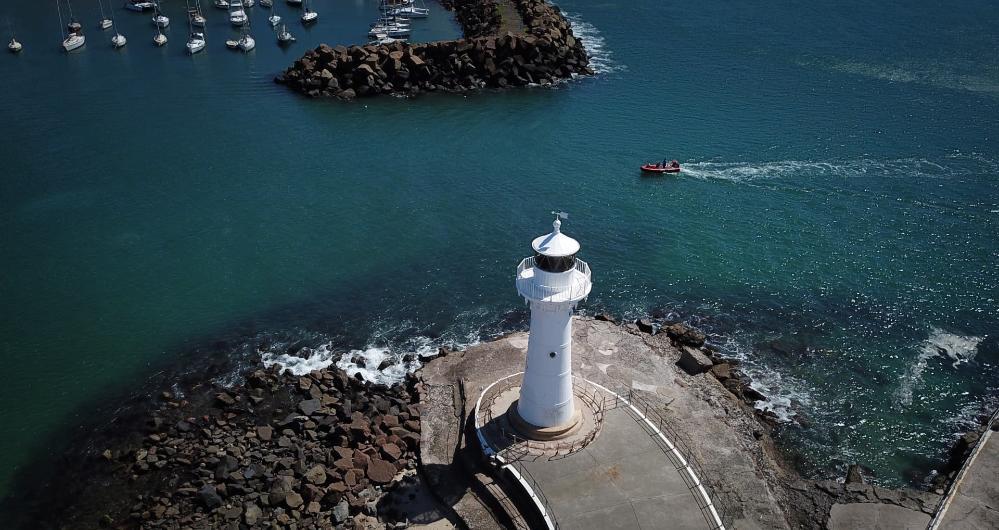How microplastics are impacting our precious plankton
UOW students get up close and personal with microscopic creatures of the deep
May 31, 2021
Researching plankton might not seem like the most interesting organisms to study in the ocean.
But the tiny plant-like organisms called phytoplankton and the small, bizarre-looking animals called zooplankton make up almost 95 per cent of biomass in our seas.
Phytoplankton make their own food from the sun while zooplankton eat the phytoplankton. Then the biggest and most plentiful types of zooplankton, called copepods, eat the smaller zooplankton. Fish then eat the copepods, which are then eaten by bigger fish. The circle of life. You get the picture!
On a sunny autumn morning, a group of marine science students from the University of Wollongong (UOW) motor out aboard the UOW research vessel, MAARA, from the shores of Belmore Basin, near Wollongong.
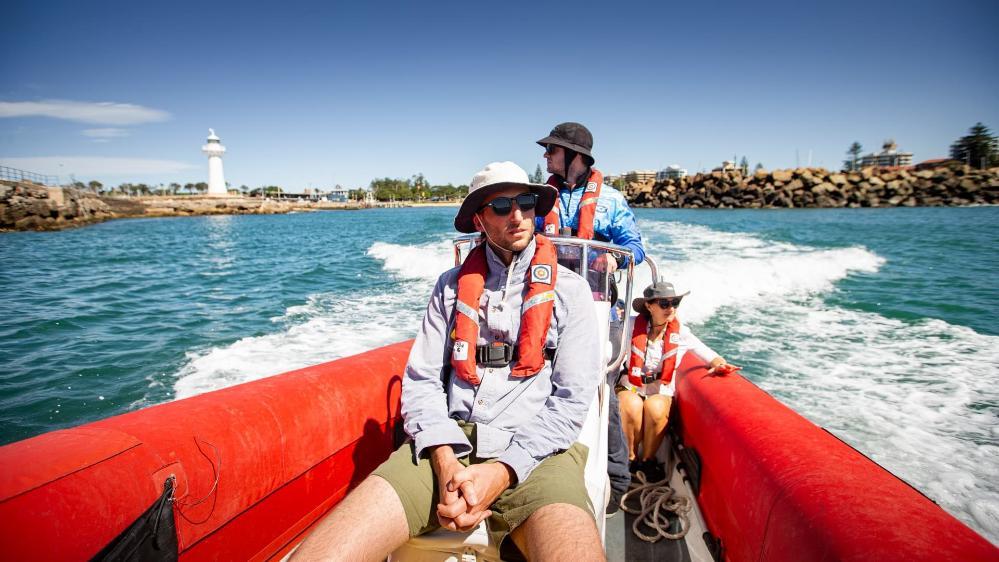
About 500 metres from the beach breakers, a long, funnel-shaped, plankton net is thrown overboard and towed behind the boat for a short distance. This net will catch a variety of different sized plankton in their thousands.
“This is the sort of fishing trip where you are guaranteed a big catch,” says Associate Professor Helen McGregor, from UOW’s School of Earth, Atmospheric and Life Sciences.
Plankton are microscopic, but their influence on the planet is huge. Not only are they the basis of the aquatic food chain, but collectively they generate 50 per cent of the planet’s oxygen through photosynthesis, explains Dr McGregor, a geologist and climate change researcher.
For student Lindsay Curlin, who is studying a Bachelor of Science, with a major in ecology and conservation biology, the boating field trip is a great way to get out of the lecture room and get some hands-on experience.
“This is fantastic. Not only are we looking at the interplay of plankton in sustaining fisheries, we are also learning about climate change, warming seas and the human impact on these little creatures.”
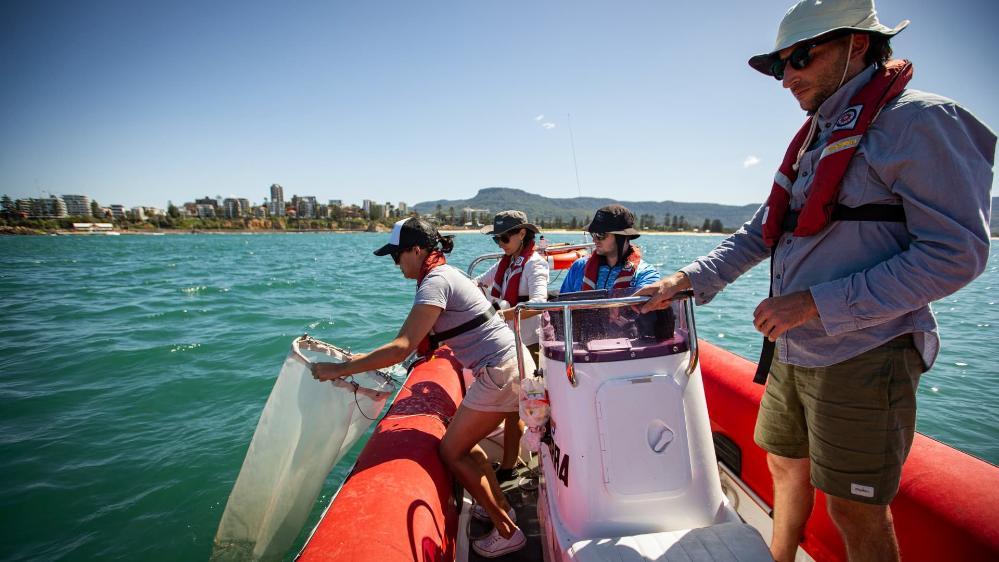
Unfortunately, this is where the bad news comes in.
Dr Trudy Costa, also from the School of Earth, Atmospheric and Life Sciences, says changes to ocean temperatures can threaten plankton health.
“If we have less plankton it has major implications on marine food webs and, of course, oxygen production,” Dr Costa says.
And if that scenario doesn’t sound scary enough, Dr Costa points to tiny spots of red and blue dots in a small container containing our plankton catch.
“These tiny ocean creatures must navigate a dense world of plastic soup. To me, it's a little shocking how much is in these relatively small samples.”
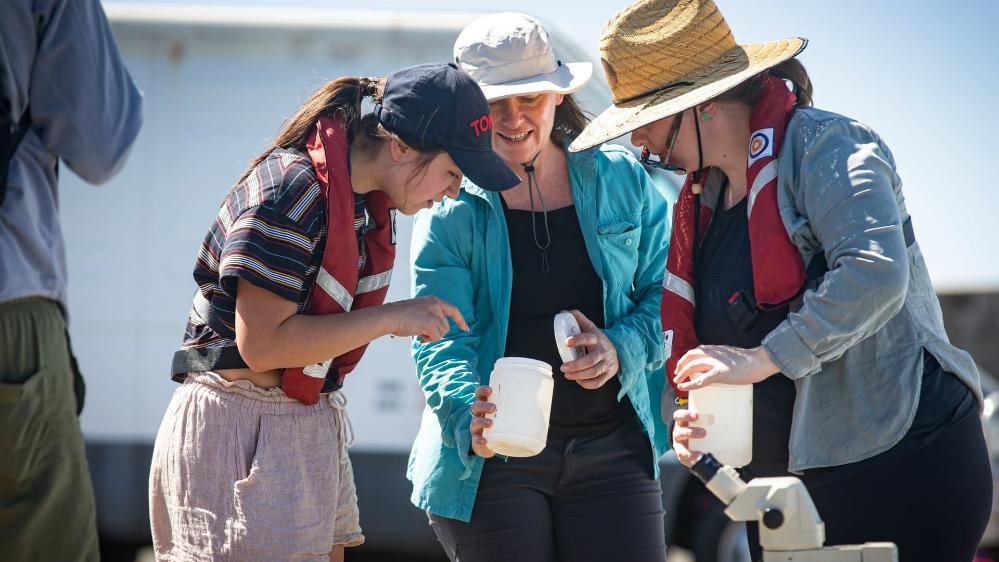
Microplastic is the result of plastic trash being broken down into seemingly invisible plastic particles by wear and UV light.
Dr Costa says that sea life ingesting microplastics is a major concern and can threaten marine biodiversity.
“While all plastic debris is dangerous to the environment, the threats escalate as plastic fragments into increasingly small pieces and enters the marine food chain and, in turn, our diet.”
Andy Gray, of the community environmental group Boomerang Alliance and alumni of UOW, believes we all need to stop the amount of plastic entering our oceans and waterways. He explains that there are two types of microplastics, primary and secondary, although their impact on the ocean is the same.
“There are tiny pieces of manufactured plastic called microbeads in things like cosmetics, toothpaste, detergents and polishes,” Andy says. "Then you have the other plastics that derive from larger plastic debris like bags and bottles.”
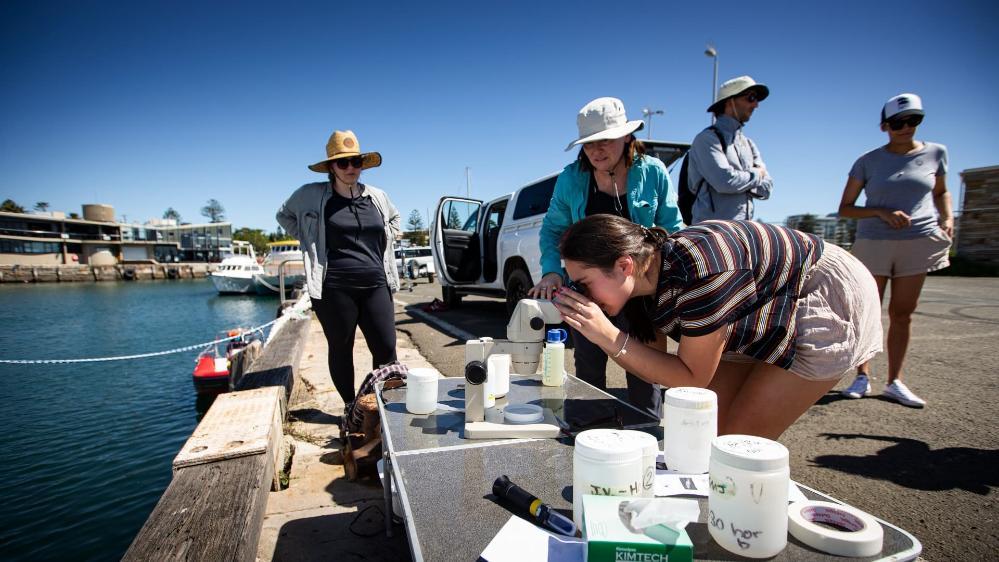
Because of the extremely long life of plastics, every piece of plastic that finds its way into our oceans could be producing these tiny particles. Research on the effect of microplastics in the environment is limited and very little is known about the impact they may have on human health.
“We need to create behavioral change and opportunities to stop plastic and other rubbish entering our oceans. We can help by reducing single-use plastics, not using products with microplastics and disposing of our rubbish thoughtfully so it doesn’t end up in our environment.”
